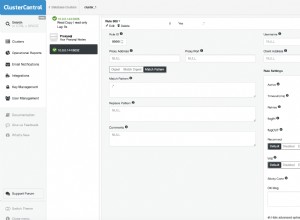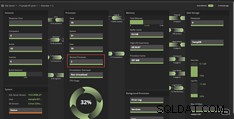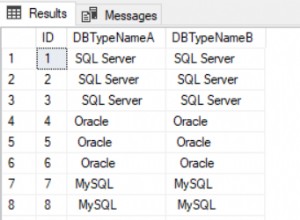Em várias ocasiões eu fiz algo semelhante. Essencialmente, agrupamento baseado em separações dentro de uma ordenação complexa. Os fundamentos da abordagem que uso, com relação a esse problema, são os seguintes:
- Crie uma tabela com todos os intervalos de tempo de interesse.
- Encontre a hora de início de cada grupo de intervalos de tempo de interesse.
- Encontre o horário de término de cada grupo de intervalos de tempo de interesse.
- Junte os horários de início e término à lista de intervalos de tempo e agrupe.
Ou, com mais detalhes:(cada uma dessas etapas pode fazer parte de um grande CTE, mas eu o dividi em tabelas temporárias para facilitar a leitura...)
Etapa 1:encontre a lista de todos os intervalos de tempo de interesse (usei um método semelhante ao vinculado por @Brad). NOTA:como @Manfred Sorg apontou, isso pressupõe que não há "segundos perdidos" nos dados de um ônibus. Se houver uma quebra nos carimbos de data/hora, esse código interpretará o intervalo único como dois (ou mais) intervalos distintos.
;with stopSeconds as (
select BusID, BusStopID, TimeStamp,
[date] = cast(datediff(dd,0,TimeStamp) as datetime),
[grp] = dateadd(ss, -row_number() over(partition by BusID order by TimeStamp), TimeStamp)
from #test
where BusStopID is not null
)
select BusID, BusStopID, date,
[sTime] = dateadd(ss,datediff(ss,date,min(TimeStamp)), 0),
[eTime] = dateadd(ss,datediff(ss,date,max(TimeStamp)), 0),
[secondsOfStop] = datediff(ss, min(TimeStamp), max(Timestamp)),
[sOrd] = row_number() over(partition by BusID, BusStopID order by datediff(ss,date,min(TimeStamp))),
[eOrd] = row_number() over(partition by BusID, BusStopID order by datediff(ss,date,max(TimeStamp)))
into #ranges
from stopSeconds
group by BusID, BusStopID, date, grp
Etapa 2:encontre o horário mais cedo para cada parada
select this.BusID, this.BusStopID, this.sTime minSTime,
[stopOrder] = row_number() over(partition by this.BusID, this.BusStopID order by this.sTime)
into #starts
from #ranges this
left join #ranges prev on this.BusID = prev.BusID
and this.BusStopID = prev.BusStopID
and this.sOrd = prev.sOrd+1
and this.sTime between dateadd(mi,-10,prev.sTime) and dateadd(mi,10,prev.sTime)
where prev.BusID is null
Etapa 3:encontre o último horário para cada parada
select this.BusID, this.BusStopID, this.eTime maxETime,
[stopOrder] = row_number() over(partition by this.BusID, this.BusStopID order by this.eTime)
into #ends
from #ranges this
left join #ranges next on this.BusID = next.BusID
and this.BusStopID = next.BusStopID
and this.eOrd = next.eOrd-1
and this.eTime between dateadd(mi,-10,next.eTime) and dateadd(mi,10,next.eTime)
where next.BusID is null
Passo 4:Junte tudo
select r.BusID, r.BusStopID,
[avgLengthOfStop] = avg(datediff(ss,r.sTime,r.eTime)),
[earliestStop] = min(r.sTime),
[latestDepart] = max(r.eTime)
from #starts s
join #ends e on s.BusID=e.BusID
and s.BusStopID=e.BusStopID
and s.stopOrder=e.stopOrder
join #ranges r on r.BusID=s.BusID
and r.BusStopID=s.BusStopID
and r.sTime between s.minSTime and e.maxETime
and r.eTime between s.minSTime and e.maxETime
group by r.BusID, r.BusStopID, s.stopOrder
having count(distinct r.date) > 1 --filters out the "noise"
Por fim, para ficar completo, arrume:
drop table #ends
drop table #starts
drop table #ranges




